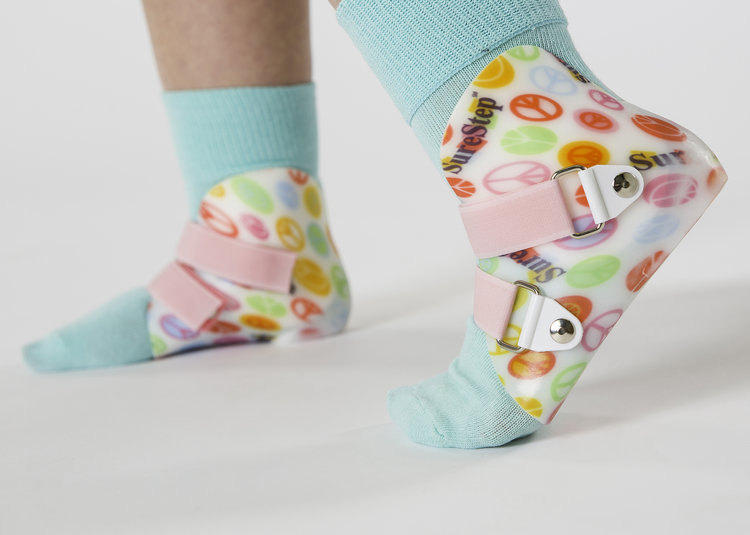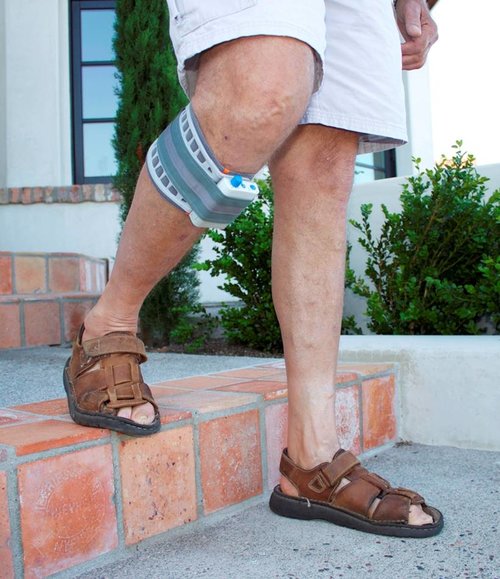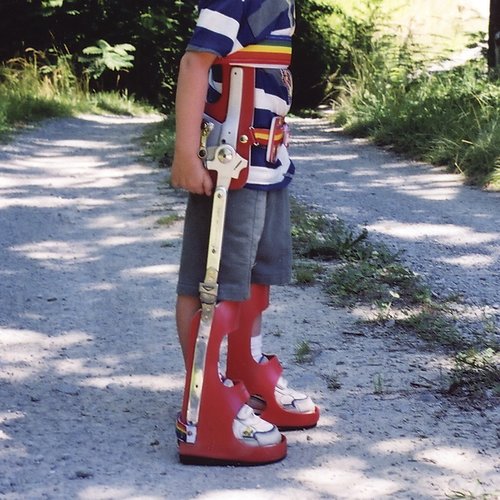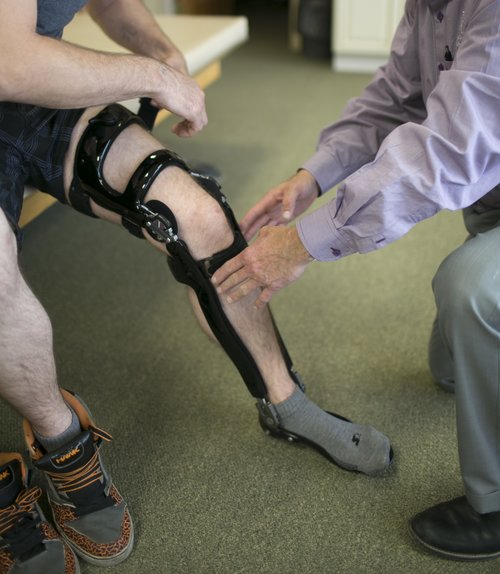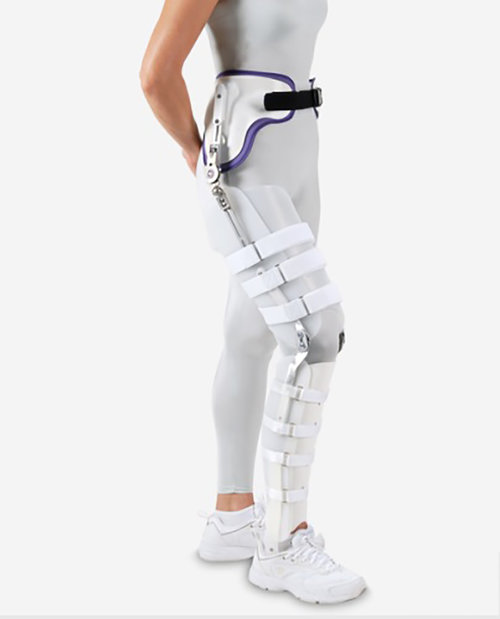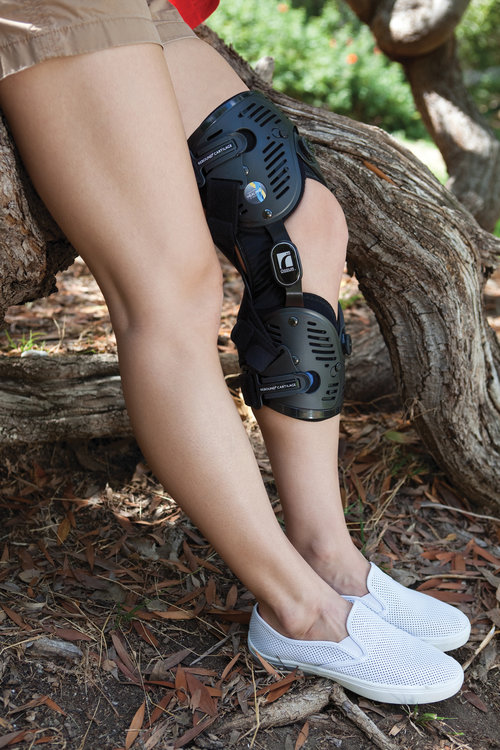Custom Orthotics & Beyond
An overview of MCOP's custom orthotic care
We specialize in creating custom-designed orthotics to help alleviate everyday challenges and mobility issues associated with even the most debilitating conditions.
Our Approach to Custom Orthotics
When it comes to orthotics, most people generally associate the word with shoe inserts used to treat a variety of everyday foot, ankle, leg, and even back and spinal pains. But shoe inserts only scratch the surface of the types of devices, technologies, and therapeutic healing processes within the realm of orthotics.
For decades, MCOP’s orthotists have successfully treated thousands of individuals, helping them overcome a number of ailments, from common developmental or degenerative conditions to debilitating injuries and lifelong conditions. Many of these conditions, injuries, and conditions include (but are not limited to):
- Spinal Conditions – Scoliosis, spina bifida treatment, spinal cord injuries, etc.
- Legs & Feet Issues – Diabetes, lower-extremity amputations for above-knee and below-knee amputees, foot and ankle arthritis (osteoarthritis), etc.
- Nerve & Muscular Conditions and Developmental Conditions – Down syndrome, cerebral palsy, peroneal nerve palsy, polio, multiple sclerosis, Charcot–Marie–Tooth disease, muscular dystrophy, traumatic brain injuries, stroke, etc.
Regardless of the severity of the condition, our goal is to make life easier by keeping our clients moving forward. Below is an overview of the types of orthotics and prosthosis systems we see on a regular basis, as well as a look at the custom design and fitting processes we use to ensure every client’s mobility goals are realized.
Please note that while the information provided here is provided from years of experience and trusted sources, almost every case is different. As such, the material provided here is only intended for informational purposes and should not be considered medical advice. Since every person’s presentation or case is different, we recommend an in-person consultation to discuss what options might be best suited to meet your needs.
Types of Orthotics & Orthotic Technology
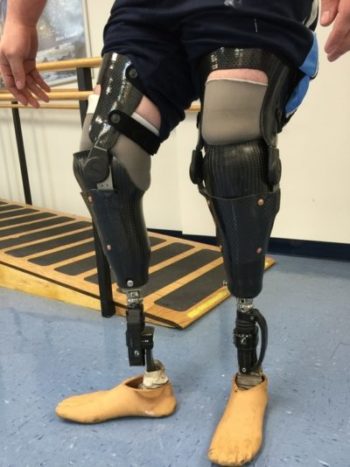 Advanced orthotics have a wide range of applications that extend far beyond basic shoe inserts. At MCOP, we specialize in creating these custom-designed orthotics to help alleviate everyday challenges and mobility issues associated with even the most debilitating conditions. Some of the more common scenarios we encounter with clients include post-trauma limb salvage, where orthotics serve as part of a larger prosthetic system, and recorrecting common muscle and joint misalignments caused by any number of genetic or environmental factors.
Advanced orthotics have a wide range of applications that extend far beyond basic shoe inserts. At MCOP, we specialize in creating these custom-designed orthotics to help alleviate everyday challenges and mobility issues associated with even the most debilitating conditions. Some of the more common scenarios we encounter with clients include post-trauma limb salvage, where orthotics serve as part of a larger prosthetic system, and recorrecting common muscle and joint misalignments caused by any number of genetic or environmental factors.
Foot Orthotics
The term foot orthoses (often referred to as simply “orthotics”) encompasses shoe inserts that are designed to redistribute the burden of weight when users are standing, walking, running, or jumping. They help reduce stresses placed on the joints within the foot, and are used to accommodate biomechanical deformities, as well as a variety of soft tissue conditions.
Common conditions treated with custom orthotics might include:
- Rheumatoid arthritis
- Plantar fasciitis
- Hallux valgus (bunions)
- High-arched Feet
These orthotics are used not only by people with foot issues, but also by individuals with ankle, knee, hip, and even spinal issues. Custom-made foot orthotics and shoe inserts can be used in conjunction with other orthoses or prostheses in the same individual.
Foot orthotics can also extend up past the ankle joint, at which point these devices are known as AFOs, or Ankle and Foot Orthoses.
Ankle & Foot Orthoses (AFOs)
 AFO’s are also sometimes referred to as “foot-drop braces” because they are commonly worn to correct foot drop, which occurs when you foot muscles relax and rest in a manner that causes tightness, stiffness, and pain in the heel and sole. But AFOs also help meet a wide range of needs.
AFO’s are also sometimes referred to as “foot-drop braces” because they are commonly worn to correct foot drop, which occurs when you foot muscles relax and rest in a manner that causes tightness, stiffness, and pain in the heel and sole. But AFOs also help meet a wide range of needs.
Traditional AFOs
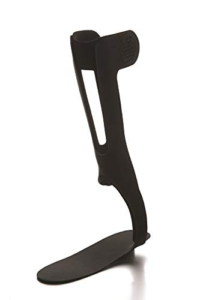
More traditional AFOs are available off-the-shelf, or they can be custom molded to fit individual wearers. A typical AFO creates an L-shaped frame around the foot and ankle, extending up past the calf for additional stability. Ankle and foot orthotic braces are often used to treat any number of ailments from the spine down to the foot. They are commonly used to control position and the motion of the ankle, compensate for various weaknesses, or correct deformities. Depending on your needs, the various types of AFO braces might be fabricated from a variety of materials, including heat moldable plastics, metal, leather, carbon fiber, etc. MCOP specializes in high-performance systems made from metal, thermoplastics, and carbon fiber materials.
For any orthotic patient, MCOP’s orthotists will help you determine which type of AFO brace or device will meet your needs, whether it’s a performance orthotic or a more traditional custom-fitted orthotic brace.
Lower Limb Salvage
Sometimes, a devastating accident or progressive disease can compromise the use of certain limbs in such a manner that future amputation is almost inevitable. We understand how difficult the decision can be whether to proceed with the amputation or try to recover enough to at least avoid amputation in the short-term (or sometimes even indefinitely).
For clients facing this predicament, MCOP makes it our mission to do all we can to salvage any affected limbs with the hopes of making a full recovery, if possible. And while this may not always be the eventual outcome, we frequently succeed in extending the length of time that the limb can remain as an intact, fully functioning part of the body.
Intrepid Dynamic Exoskeletal Orthosis (IDEO) AFO
For limb-salvaging attempts, the ExoSym (formerly known as IDEO) serves as an innovative type of ankle foot orthosis developed for military service members hoping to avoid amputation.
The IDEO restores mobility by providing increased dynamics and energy return. This gives clients more agility and empowers them to participate in high-impact activities like running, jumping, and more. The device is light, strong, and responsive.
The IDEO is a very popular orthotic option for athletes and military service members because it’s known to restore high-level activity to users, increasing the likelihood of positive outcomes following a devastating injury that jeopardizes the use of all or part of a limb. Even so, a customized, properly fitted device for each individual is extremely important for increasing the chances of success and meeting each person’s recovery goals.
Posterior Dynamic Element (PDE) AFO Orthotics
Another device known as the PDE AFO remains a popular option for more performance-oriented individuals thanks to its user-friendly modular components that allow users to get the perfect fitting system. MCOP Orthotists can fabricate the system based on the user’s weight, needs, and specific goals, and the modular components allow the user to continue tailoring the device to meet match his or her progress requirements until, eventually, the system isn’t needed for the person to continue a mobile lifestyle.
SMO | Supramalleolar Orthosis
A Supramalleolar Orthosis (SMO), as with other orthoses, gets its name for the part of the body for which it encompasses. This orthosis supports the leg just above the ankle bones or malleoli, and is considered the shortest of the Ankle Foot Orthoses (AFO’s). The SMO is prescribed for patients (often children) who have soft, flexible, flat feet. The SMO is designed to maintain a vertical, or neutral heel while also supporting the three arches of the foot. This can help improve standing balance and walking.
WalkAide
WalkAide is a revolutionary FDA cleared medical device that leverages functional electrical stimulation (FES) to improve walking ability of people living with foot drop caused by upper motor neuron injuries or conditions such as Cerebral Palsy, Multiple Serosis, Stroke, or Traumatic Brain Injury. The WalkAide may replace the traditional AFO to re-engage a person’s existing nerve pathways and muscles.
RGO | Reciprocating Gait Orthosis
These are the most frequently used brace for the ambulatory needs of a paralyzed child or adult. Hands-free standing occurs by linking the legs to the torso section so that hip flexion and extension movements are free to occur for taking steps but while standing, the torso is restricted from flexing forward. With every step, as one leg flexes, the other leg must extend and thereby stretch out the hip contracting structures.
Knee-Ankle-Foot-Orthoses (KAFO)
Used to treat dysfunctions or instabilities in the ankle and knee together, knee-ankle-foot-orthoses (KAFO) are basically AFOs that extend all the way up past the knee joint. The entire system is usually connected, though they can often be used separately as standalone orthotic devices.
Since there are many different reasons why a person might use KAFO (broken bones, arthritic joints, hyperextended knee, muscular weakness or paralysis, amputation-related issues, etc.), the system designs and support capabilities vary from device to device. In addition, the KAFO may be made of different materials depending on the needs of the individual and often include moving parts at the knee and ankle to allow for controlled bending.
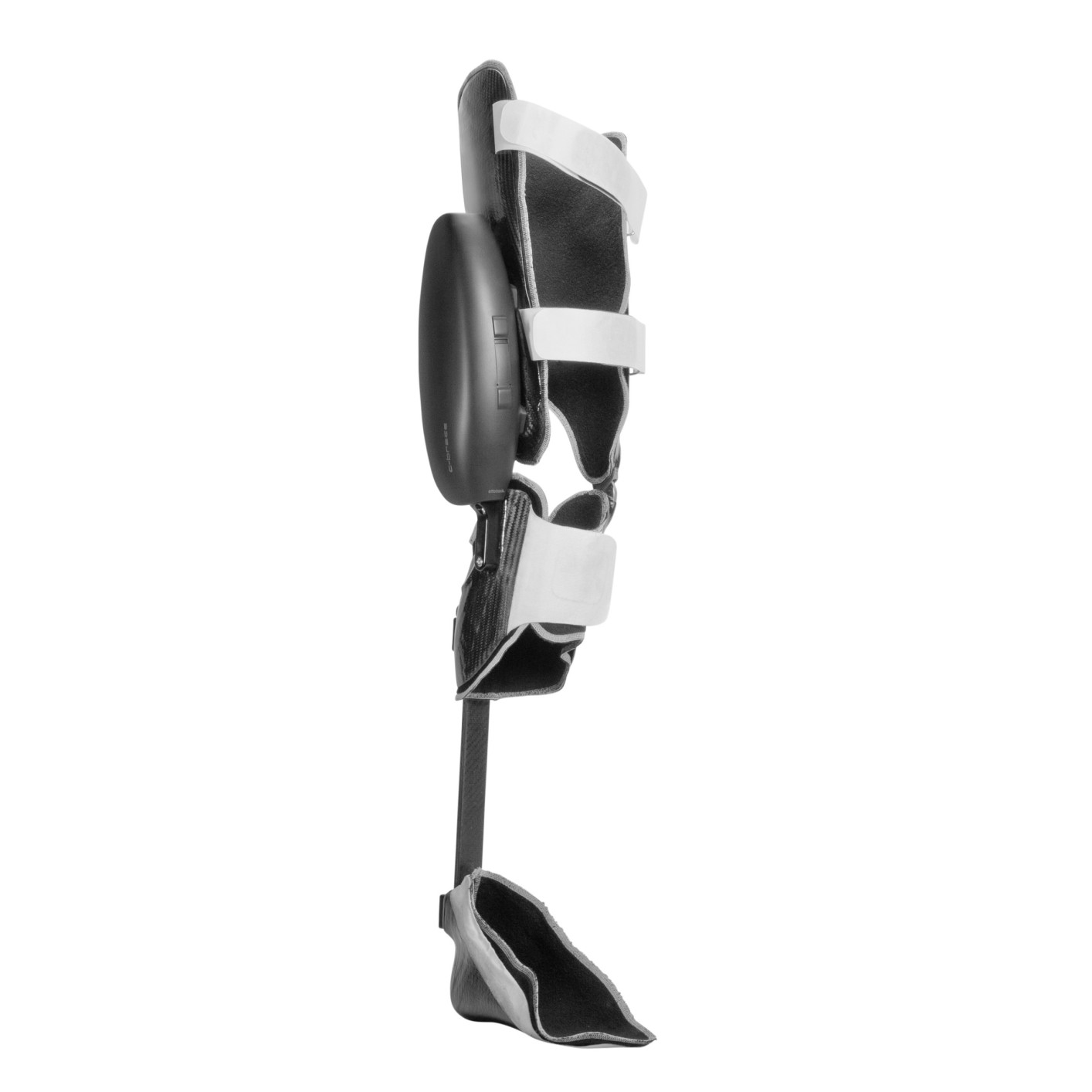 The Ottobock C-Brace
The Ottobock C-Brace
One of the most common types of KAFO’s that MCOP outfits customers with is the C-brace by Ottobock. This device is an excellent alternative to the more traditional stance-control KAFO brace, and the system promotes a much more natural gait pattern.
As far as its technology goes, the microprocessor in the C-Brace provides real-time control of the entire gait cycle, ensuring the highest level of safety while making movement easier and more stable, even on rough or irregular terrain.
Because the C-Brace analyzes gait in real time, the C-Brace Orthotronic can predict and adjust accordingly for each step. Thus, the C-Brace Mobility System allows wearers to walk comfortably and change speeds with less effort and concentration than other leading devices. In some cases, it can also provide the necessary support to allow those who were primarily dependent on a wheelchair to be able to stand and walk again!
MCOP is also proud to be conducting clinical research on the benefits of the Ottobock C-Brace Orthotronic, with the ultimate goal of making it reimbursable by Medicare and more private insurance companies.
HKAFO | Hip Knee Ankle Foot Orthosis
This device is used on patients requiring more stability of the hip and lower torso, due to paralysis and weakness, in addition to the lower extremity involvement. The brace will provide pelvic stability in several planes, from rotation, to side-to-side, and front-to-back motions. Primarily the hip section and hip joint of the brace stabilizes and aligns the lower leg underneath, reducing unwanted motion, while increasing steps per minute and reducing energy expenditure.
KO | Knee Orthosis
A knee orthosis is a specially designed external medical device constructed of varying lightweight and durable compositions of metals and high-density materials to provide biomechanical assistance to stabilize and support an injured knee and its surrounding ligaments, tendons, and muscles by extending above and below the knee joint to provide healing support for injuries, diseases, inflammations and post-surgical recovery and rehabilitation of the knee.
Other types of lower-limb orthotics might include:
- Hinged Knee Braces
- Patella Stabilizers
- Knee Immobilizers
- Fracture Orthoses
- Range of Motion Orthoses
Spinal Orthotics
To correct a wide variety of back and spinal conditions, MCOP also tailors custom systems for users to wear around the torso areas. These options include, but are not limited to:
- HALO Management – To correct several different types of cervical spine issues, halo systems offer tenacious support to the cervical spine.
- Cervical Orthoses – For whiplash injuries, fractures and cervical fusions, these neck brace-like devices can stabilize the upper spinal area to promote healing.
- Thoracolumbosacral orthosis – For scoliosis braces, custom-fitted TLSO spinal braces can help to correct lateral or sideways curvatures in the spine. One of the most common types of TLSO braces are hyperextension orthotic braces, which help to promote proper healing and recovery for trauma-induced or osteoporosis fractures of the vertebrae.
- Lumbosacral Supports – For lower spinal and lumbar conditions, lumbosacral support devices help to alleviate pain in the lower back area caused by muscle strains and spasms.
- Spinal Braces – Designed to treat pain, fractures, Scoliosis, and degeneration, spinal orthotics can improve your comfort and quality of life. Whether you need a custom brace designed just for you or simply want a little extra support from a custom-fitted brace, our team can help you find the solution that is right for you.
Pediatric Orthotic Design
Some of our most rewarding moments happen when we get to witness a child grow and develop through the help of custom orthotics. Luckily, this is something we have the privilege to experience quite often, though it’s never not without its own set of unique challenges and obstacles to address.
With any pediatric client, our goal is to have them graduate from needing to use orthotics to, ideally, not needing to use orthotics at all. Of course, this is not always possible, especially when dealing with lifelong and progressive conditions – but we always put in 110% effort, regardless of the circumstances.
When developing custom orthotics for children, our orthotists must remain mindful of two essential components: the child’s growth and mobility development.
- Growth – Orthotic braces need to be designed in a manner that doesn’t inhibit any sort of growth, but rather, promotes healthier structural growth of the bones, muscles, ligaments, and tendons.
- Mobility Development – Similar to growth, the goal of every orthotic product is to ensure that the client develops the strength and dexterity to maintain, or regain, their overall physical mobility. With children who are still developing their overall mobility, creating a system that fosters normal mobility development is key.
To accommodate some of the inherent issues associated with rapid child growth, MCOP usually changes our pediatric patients’ orthotic set-ups every 3 to 5 years, depending on their growth rate.
Natasha’s Recovery Story
One of our clients at MCOP, Natasha, suffered a spinal cord injury from a horse racing accident which left her right leg paralyzed from the hip down and weakened her left leg considerably. Initially, Natasha used an AFO on her left side and a KAFO on her right leg. The KAFO prevented hyperextension in her knee and provided extension assistance to help stabilize her knee. Despite this Natasha had to use forearm crutches and prevent her knee from buckling by adopting an unnatural posture and balance of her weight. These drawbacks left her feeling uncomfortable walking without her significant other by her side and prevented her from shopping or going to work on a number of occasions.
Initially, Natasha was resistant to trying the Ottobock C-Brace Orthotronic Mobility System. She had seen such marked improvement from her previous KAFO to her current KAFO that she felt she didn’t need anything more. However, after two weeks in the C-Brace Orthotronic, she was a completely different person. She was taking the subway to work and shopping by herself, without relying on her significant other for safety support. Natasha was also able to replace her forearm crutches with a cane. Her latest report is that all is well and she continues to love the freedom of mobility that the Ottobock C-Brace Orthotronic has afforded her.
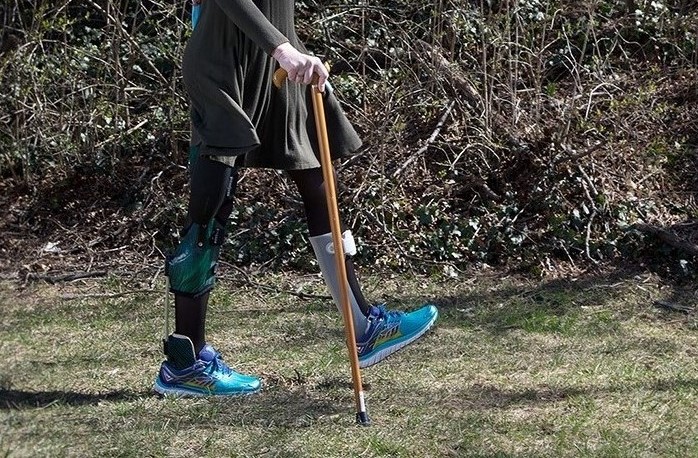
Our Orthotics Treatment Processes
Our Orthotics Treatment Processes
Typically within one day or less, we can build and/or fit a custom orthotic brace (or series of braces) for our clients, setting them on the road to a better life almost immediately. The process is similar to our prosthetics design and fitting process, though not quite as intensive unless the orthotic system is part of a much larger prosthetic system.
Get Started with Orthotic Patient Forms
Insurance Coverage
Though insurance is not required to obtain the orthotics, a prescription from your physician is usually all we need to get the entire process started. Whether you have private or government insurance, VA, Tricare, or Medicare/Medicaid, most orthotic or prosthetic systems are typically covered to some extent, and our team will work closely with you to ensure you understand any insurance or cost-related treatment implications.
In addition, MCOP’s orthotic insurance experts will work to obtain pre-authorization from your insurance provider regarding the products that are best suited for your lifestyle. It is also important to have your team check your benefits to make sure that there are no specific exclusions in your insurance policy.
Initial Consultation
We initially consult with the client to explore treatment options with orthotics. We’ll discuss your mobility goals, limitations, and growth expectations (for children), then determine how we’ll help you reach those goals with orthotic braces. The initial consultation is an important kick-off meeting that ensures our team is aligned with you to reach your mobility goals.
Orthotic Design
After the consultation, and usually within the same day, MCOP orthotists get to work designing the ideal brace or system of braces. We partner with several different orthotic brace manufacturers, leveraging the latest technology while keeping tabs on innovative new products so we can provide the ideal options for each of our orthotic customers. So whether your orthotic brace is an off-the-shelf product, or something to be custom-built for performance, we have experience designing a variety of systems to treat virtually any mobility issues.
We also commonly see clients who need orthotics to complement and work along side of their prosthetic system, and these types of devices fall right into our sweet spot of expertise.
Using Orthotics
As with any custom prosthetic or orthotic system, clients should expect a short timeframe to adapt to using the device, as well as some minor maintenance and upkeep.
Wearing Orthotics
Every person’s situation is different, but most people will generally ease their way into wearing a custom orthotic system slowly but steadily, starting with a couple hours a day and working up to wearing the device almost full-time (or as directed). This transition period helps users avoid common nuisances such as minor skin irritations and muscular soreness as the body adjusts.
Skin redness and initial pains are also common initially, but they should dissipate after the first few days of usage. However, if you begin to develop blisters or bruising, you should discontinue wearing the device and reach out to your orthotist for potential device adjustments.
Tips for Wearing Lower Limb Orthotics:
- Wear appropriate footwear – Opt for easy-to-adjust footwear, and consider velcro straps instead of laces. Wear athletic shoes, remove the insoles as needed, and avoid dress shoes and sandals.
- Use long socks – Limit skin irritations by wearing longer socks.
- Practice proper positioning – Before you fully tighten the device to your leg, you should ensure that it is positioned properly. Your foot should not slide, and the straps should be tight (but not too tight) in the calf and/or thigh areas where the straps typically reside.
Orthotic Cleaning & Maintenance
Keep your device clear of dust and debris to extend its life. Though you should never submerse the device in water (unless it is waterproof), you can and should use a damp cloth to wipe it clean periodically, or after it becomes dirty or dusty. You can also use rubbing alcohol to remove any body oils or residual build-up.
Also, make sure to avoid extreme heat, especially if your orthotic is constructed from plastic.
On-Going Check-ins
For more complex medical issues, we’ll aim to follow up with you every couple of months to monitor your healing progress and ensure you are reaching your goals. If your condition is such that you’ll eventually graduate from having to use an orthotic brace, we’ll ensure you are prepared for the next steps in your journey to recovery, whether that’s slowly weaning you off of being reliant upon your new devices or simply giving you strengthening tips.
Choosing the Ideal Orthotics: How MCOP Can Help
We always prepare our clients to face their mobility challenges with confidence and courage, and we’re always happy to provide life-changing tips and training for ongoing success. Continued development and steady improvements are essential components of MCOP’s approach to #MovingForward, and every single recovery regime is custom-tailored to accommodate each user’s individual needs.
Curious how we can help you find the right products, training, or other services related to orthotics? Contact us today for more information on how you can #MoveForward to a happier, more active lifestyle.
